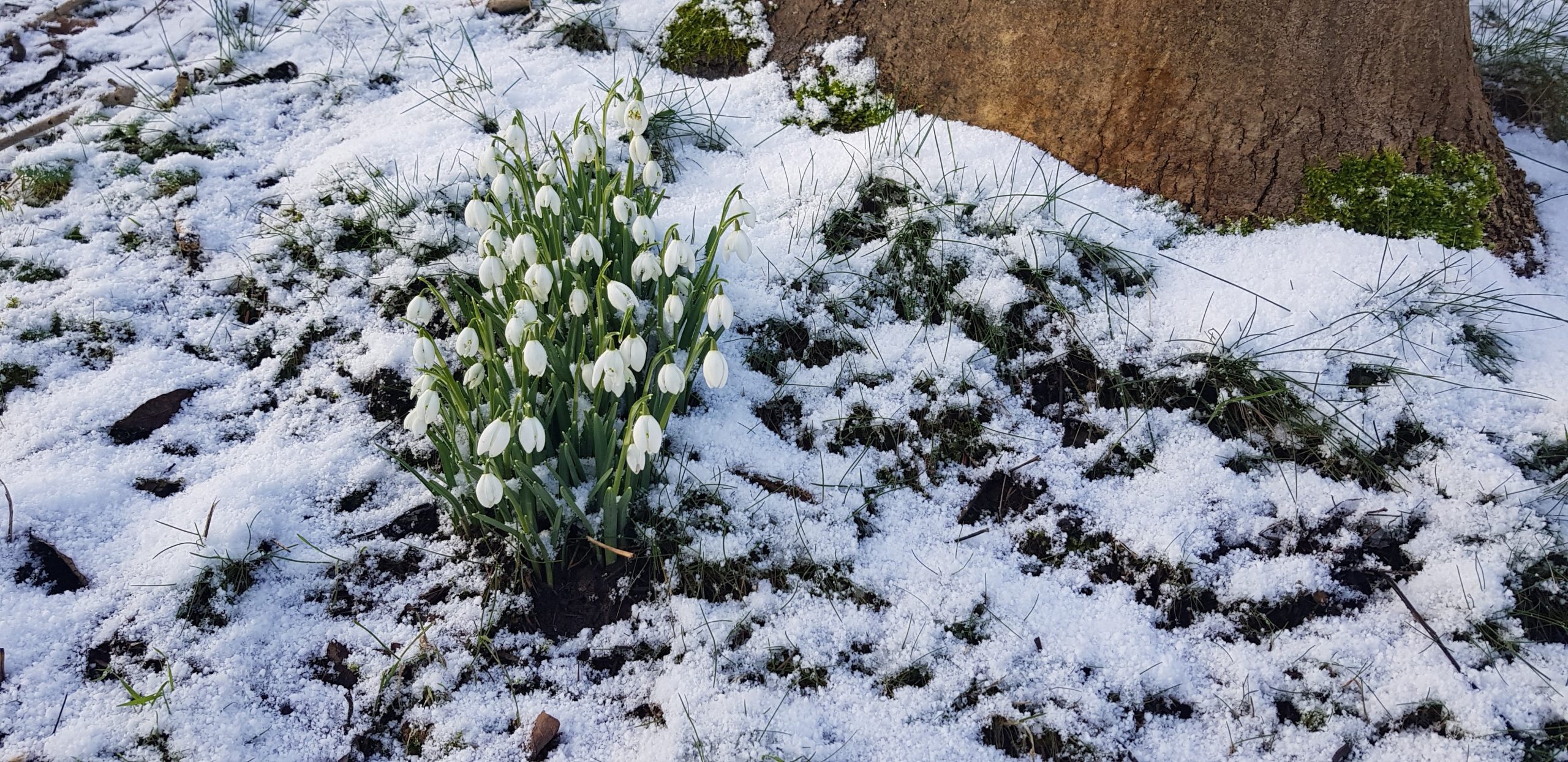We’re now well into February and the year seems to be setting off at a rather a speedy trot! The wildlife at Panshanger Park has certainly taken note of this and is preparing itself for the coming Spring.
In the woods the snowdrops are starting to sprinkle their bright whiteness amongst the leaf litter. Thankfully snowdrops are well adapted to being at the forefront of the Spring emergence game- they have natural anti-freeze properties which means that they can endure the frosts that we can still have at this time of year.

The daffodils and bluebells won’t be in flower for a little while yet but their leaves are starting to optimistically poke through in readiness for Spring. When walking through the park’s woodlands keep an eye out for them and please try to avoid them- trampling causes damage to them, which would also mean less of a lovely flowery spectacle later in the year.
Other wildlife is starting to ramp things up this month too. You may see the coots on the lakes squaring up to establish their breeding territories. They can get quite aggressive towards each other, as well as to other birds that may be in the way, at this time of year!
Also, as the temperatures increase you may see amphibians emerging from their winter retreats in the woodlands. Frogs, toads and newts will be making their way down to the ponds to set off activities for this year’s tadpoles and efts (baby newts).
The buds on many of the trees at Panshanger are now becoming more apparent- readying themselves for the brighter, warmer weather when their leaves emerge. Before the leaves arrive, take time to look at the form of the trees. Different species have distinctive shapes- sweet chestnuts sometimes grow with a beautiful twisting of their trunk, a lovely example at the park is by the yews between the Orangery and the Great Oak. The Great Oak itself is very distinctive with its spreading limbs, one of which has reached the floor and re-rooted.
There is also a spinney of elm trees which have happily survived the devastating Dutch Elm disease and are propagating out through suckers, with the oldest tree in the centre. You can see these down by the Broadwater near the Waterwheel.
If you’d like to learn more about the elms of Panshanger Park, or other aspects of the park, take a look at our upcoming events at panshangerpark.co.uk.
Jo Whitaker is the Panshanger Park People and Wildlife Officer.
She works for Herts and Middlesex Wildlife Trust and her role is funded by Tarmac.
Photo credits:
Toads and other amphibians are heading towards the ponds soon ©Peter Elton
Snowdrops have a natural antifreeze so they’re not damaged by low temperatures ©Jo Whitaker


